Content for TS 23.304 Word version: 19.1.0
1…
4…
4.2.3…
4.2.7…
4.3…
5…
5.1.4…
5.1.5…
5.2…
5.3…
5.4…
5.5…
5.6…
5.7
5.8…
5.9…
6…
6.1.2…
6.2…
6.3…
6.3.2…
6.3.2.3…
6.3.2.4…
6.4…
6.4.3…
6.5…
6.5.2…
6.6…
6.7…
6.7.2…
6.8…
7…
7.2…
6.3.2.4 5G ProSe UE-to-UE Relay Discovery
6.3.2.4.1 General
6.3.2.4.2 Procedure for 5G ProSe UE-to-UE Relay Discovery with Model A
6.3.2.4.3 Procedure for 5G ProSe UE-to-UE Relay Discovery with Model B
6.3.2.4.4 Candidate 5G ProSe UE-to-UE Relay Discovery
6.3.2.4.5 Acquiring Direct discovery set by model A discovery
6.3.2.5 5G ProSe multi-hop UE-to-Network Relay Discovery
6.3.2.5.1 General
6.3.2.5.2 Procedure for 5G ProSe multi-hop UE-to-Network Relay Discovery with Model A
6.3.2.5.3 Procedure for Multi-hop 5G ProSe UE-to-Network Relay Discovery with Model B
6.3.2.5.4 Additional parameters announcement procedure over 5G ProSe multi-hop UE-to-Network Relay
6.3.2.6 5G ProSe Mulit-hop UE-to-UE Relay Discovery
6.3.2.6.1 General
6.3.2.6.2 Procedure for 5G ProSe Multi-hop UE-to-UE Relay discovery of IP PDU type
6.3.2.6.3 Procedure for 5G ProSe Multi-hop UE-to-UE Relay discovery of non-IP PDU type
6.3.2.6.3.1 Procedure for Multi-hop 5G ProSe UE-to-UE Relay Discovery of non-IP PDU type with Model A
6.3.2.6.3.2 Procedure for Multi-hop 5G ProSe UE-to-UE Relay Discovery of non-IP PDU type with Model B
...
...
6.3.2.4 5G ProSe UE-to-UE Relay Discovery |R18| p. 103
6.3.2.4.1 General p. 103
5G ProSe UE-to-UE Relay Discovery is applicable to both 5G ProSe Layer-3 and Layer-2 UE-to-UE Relay Discovery for public safety use and commercial services. To perform 5G ProSe UE-to-UE Relay Discovery, the 5G ProSe End UE and the 5G ProSe UE-to-UE Relay are pre-configured or provisioned with the related information as described in clause 5.1.
A Relay Service Code (RSC) is used in the 5G ProSe UE-to-UE Relay Discovery, to indicate the connectivity service the 5G ProSe UE-to-UE Relay provides to 5G ProSe End UEs. The RSCs are pre-configured or provisioned on the 5G ProSe UE-to-UE Relay and the 5G ProSe End UE as defined in clause 5.1. The 5G ProSe UE-to-UE Relay and the 5G ProSe End UE are aware of whether a RSC is offering 5G ProSe Layer-2 or Layer-3 UE-to-UE Relay service based on the UE-to-UE Relay Layer indicator as specified in clause 5.1. A 5G ProSe UE-to-UE Relay supporting multiple RSCs advertises the RSCs using multiple discovery messages, with one RSC per discovery message.
6.3.2.4.2 Procedure for 5G ProSe UE-to-UE Relay Discovery with Model A p. 103
Depicted in Figure 6.3.2.4.2-1 is the procedure for 5G ProSe UE-to-UE Discovery with Model A.

Step 1.
The 5G ProSe UE-to-UE Relay has discovered other UEs in proximity and obtains the Direct discovery set from other UEs in proximity per RSC. (e.g. via a previous 5G ProSe UE-to-UE Relay Discovery or via secure PC5 connection between 5G ProSe U2U Relay and 5G ProSe End UE (refer to TS 33.503)).
Step 2.
The 5G ProSe UE-to-UE Relay sends a UE-to-UE Relay Discovery Announcement message. The UE-to-UE Relay Discovery Announcement message contains the Type of Discovery Message, User Info ID of the 5G ProSe UE-to-UE Relay, RSC and Direct discovery set including list of protected user info (i.e. Application Layer ID) received from the 5G ProSe End UEs supporting the RSC. The UE-to-UE Relay Discovery Announcement message is sent using the Source Layer-2 ID and Destination Layer-2 ID as described in clause 5.8.4.
The 5G ProSe UE-to-UE Relay shall only announce user info (i.e. Application Layer ID) of other UEs in proximity that did not include an Announce Prohibited Indication when they were previously discovered.
A 5G ProSe End UE monitors announcement messages from a 5G ProSe UE-to-UE Relay. The 5G ProSe End UEs determine the Destination Layer-2 ID for signalling reception as specified in clause 5.1.
6.3.2.4.3 Procedure for 5G ProSe UE-to-UE Relay Discovery with Model B p. 104
Depicted in Figure 6.3.2.4.3-1 is the procedure for 5G ProSe UE-to-UE Relay Discovery with Model B.

Step 1.
The discoverer 5G ProSe End UE (UE-1) sends a 5G ProSe UE-to-UE Relay Discovery Solicitation message. The 5G ProSe UE-to-UE Relay Discovery Solicitation message contains the Type of Discovery Message, RSC and the Direct Discovery set which includes the protected user info (i.e. Application Layer ID) of the discoverer 5G ProSe End UE (UE-1) and the discoveree 5G ProSe End UE (UE-2). The 5G ProSe UE-to-UE Relay Discovery Solicitation message is sent using the Source Layer-2 ID and Destination Layer-2 ID as described in clause 5.8.4.
A 5G ProSe UE-to-UE Relay determines the Destination Layer-2 ID for signalling reception as specified in clause 5.1.
The discoverer 5G ProSe End UE may include an Announce Prohibited Indication in the UE-to-UE Relay Discovery Solicitation message. If a 5G ProSe UE-to-UE Relay receives a Relay Discovery Solicitation message with an Announce Prohibited Indication it does not consider the 5G ProSe End UE as discovered during this procedure for inclusion in 5G ProSe UE-to-UE Relay Discovery with Model A, see clause 6.3.2.4.2, step 1.
Step 2.
If the RSC contained in the solicitation message matches any of the (pre)configured RSC(s), as specified in clause 5.1.5.1, of a 5G ProSe UE-to-UE Relay, the 5G ProSe UE-to-UE Relay sends a 5G ProSe UE-to-UE Relay Discovery Solicitation message. The 5G ProSe UE-to-UE Relay Discovery Solicitation message contains the Type of Discovery Message, the Direct Discovery set which includes the list of protected user info (i.e. Application Layer ID) of the discoverer 5G ProSe End UE (UE-1) and the discoveree 5G ProSe End UE (UE-2), User Info ID of UE-to-UE Relay, RSC. 5G ProSe UE-to-UE Relay Discovery Solicitation message is sent using the Source Layer-2 ID and Destination Layer-2 ID as described in clause 5.8.4.
A 5G ProSe End UE determines the Destination Layer-2 ID for signalling reception as specified in clause 5.1.
The 5G ProSe UE-to-UE Relay self-selects the Source Layer-2 ID as specified in clause 5.8.4.2.
Step 3.
If the RSC contained in the solicitation message matches any of the (pre)configured RSC(s), as specified in clause 5.1.5.1, of the discoveree 5G ProSe End UE (UE-2), and the discoveree 5G ProSe End UE (UE-2) matches the user info (i.e. Application Layer ID) of the discoveree 5G ProSe End UE (UE-2) contained in the solicitation message, then the discoveree 5G ProSe End UE (UE-2) responds to the 5G ProSe UE-to-UE Relay with a 5G ProSe UE-to-UE Relay Discovery Response message. The 5G ProSe UE-to-UE Relay Discovery Response message contains the Type of Discovery Message, RSC, the Direct Discovery set which includes the protected user info (i.e. Application Layer ID) of the discoverer 5G ProSe End UE (UE-1) and the discoveree 5G ProSe End UE (UE-2). The 5G ProSe UE-to-UE Relay Discovery Response message is sent using the Source Layer-2 ID and Destination Layer-2 ID as described in clause 5.8.4. If the discoveree 5G ProSe End UE (UE-2) receives multiple UE-to-UE Relay Discovery Solicitation messages from different 5G ProSe UE-to-UE Relays with the same RSC and the user info (i.e. Application Layer ID) of the discoveree 5G ProSe End UE (UE-2), it may choose to respond or not to a 5G ProSe UE-to-UE Relay (e.g. based on the PC5 signal strength of each message received).
The discoveree 5G ProSe End UE may include an Announce Prohibited Indication in the UE-to-UE Relay Discovery Response message. If a 5G ProSe UE-to-UE Relay receives a Relay Discovery Response message with an Announce Prohibited Indication it does not consider the 5G ProSe End UE as discovered during this procedure for inclusion in 5G ProSe UE-to-UE Relay Discovery with Model A, see clause 6.3.2.4.2, step 1.
Step 4.
The 5G ProSe UE-to-UE Relay sends a 5G ProSe UE-to-UE Relay Discovery Response message. The 5G ProSe UE-to-UE Relay Discovery Response message contains the Type of Discovery Message, User Info ID of UE-to-UE Relay, RSC, the Direct Discovery set which includes the list of protected user info (i.e. Application Layer ID) of the discoverer 5G ProSe End UE (UE-1) and the discoveree 5G ProSe End UE (UE-2). The 5G ProSe UE-to-UE Relay Discovery Response message is sent using the Source Layer-2 ID and Destination Layer-2 ID as described in clause 5.8.4.
6.3.2.4.4 Candidate 5G ProSe UE-to-UE Relay Discovery p. 105
This procedure for candidate 5G ProSe UE-to-UE Relay Discovery to support the negotiated Relay reselection as described in clause 6.7.4 when the discoverer End UE discovers a candidate 5G ProSe UE-to-UE Relay.
The procedure for 5G ProSe UE-to-UE Relay Discovery with Model B (see clause 6.3.2.4.3) is used with the following differences:
- Step 1: In the 5G ProSe UE-to-UE Relay Discovery Solicitation message the RSC and the User Info ID of a candidate 5G ProSe UE-to-UE Relay are included in the UE-to-UE Relay Discovery set and the Direct Discovery set is not included. If the 5G ProSe End UE receives the Layer-2 ID of the candidate 5G ProSe UE-to-UE Relay in a Link Modification Request message, it may set the Layer-2 ID of the candidate 5G ProSe UE-to-UE Relay as the Destination Layer-2 ID.
- Step 2 and step 3 are skipped because Direct Discovery set is absent, and the User Info ID of the candidate 5G ProSe UE-to-UE Relay in the received 5G ProSe UE-to-UE Relay Discovery Solicitation message matches that of the 5G ProSe UE-to-UE Relay.
- Step 4: If a 5G ProSe UE-to-UE Relay matches the User Info ID of a candidate 5G ProSe UE-to-UE Relay received in the 5G ProSe UE-to-UE Relay Discovery Solicitation then it sends the 5G ProSe UE-to-UE Relay Discovery Response (with the RSC received in step 1) and does not include the Direct Discovery set.
6.3.2.4.5 Acquiring Direct discovery set by model A discovery p. 105
The 5G ProSe UE-to-UE Relay may monitor Announcement messages from the 5G ProSe End UEs.
When receiving an Announcement message from a 5G ProSe End UE, the 5G ProSe UE-to-UE Relay may include the received protected user info (i.e. Application Layer ID) in the UE-to-UE Relay Discovery Announcement message as specified in clause 6.3.2.4.2.
6.3.2.5 5G ProSe multi-hop UE-to-Network Relay Discovery |R19| p. 105
6.3.2.5.1 General p. 105
5G ProSe multi-hop UE-to-Network Relay Discovery is applicable to both 5G ProSe multi-hop Layer-3 and Layer-2 UE-to-Network relay discovery for public safety use and commercial services. To perform 5G ProSe multi-hop UE-to-Network Relay Discovery, the 5G ProSe Remote UE, the 5G ProSe Intermedidate UE-to-Network Relay and the 5G ProSe UE-to-Network Relay are (pre-)configured or provisioned with the related information as described in clause 5.1.4
The RSC is used in the 5G ProSe multi-hop UE-to-Network Relay discovery, to indicate the connectivity service the 5G ProSe Intermedidate UE-to-Network Relay and the 5G ProSe UE-to-Network Relay provide to the 5G ProSe Remote UE. The maximum number of hops is provisioned by the network to the 5G ProSe Remote UE, 5G ProSe Intermedidate UE-to-Network Relay and the 5G ProSe UE-to-Network Relay per RSC.
A 5G ProSe UE-to-Network Relay supporting multiple RSCs can advertise the RSCs using multiple discovery messages, with one RSC per discovery message.
Additional information not directly used for discovery can also be advertised using the PC5-D protocol stack in single or separate discovery messages of type "Relay Discovery Additional Information".
6.3.2.5.2 Procedure for 5G ProSe multi-hop UE-to-Network Relay Discovery with Model A p. 106
Figure 6.3.2.5.2-1 presents the procedures for 5G ProSe multi-hop UE-to-Network Relay Discovery using Model A discovery.
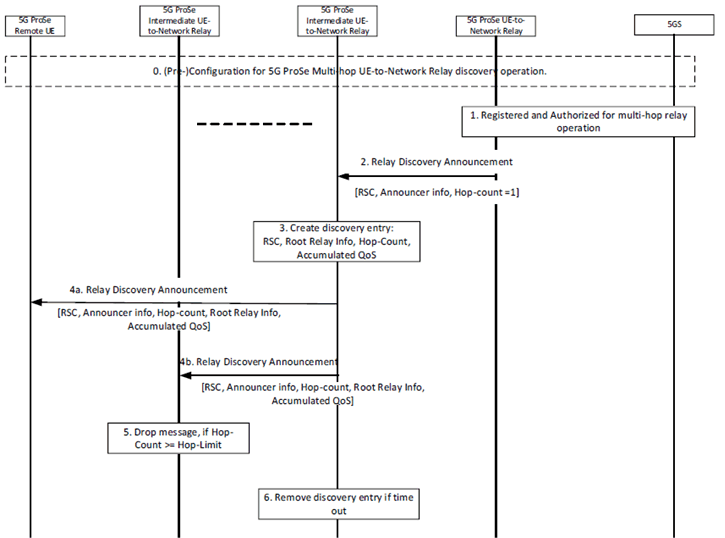
Figure 6.3.2.5.2-1: 5G ProSe multi-hop UE-to-Network Relay discovery procedure with Model A
(⇒ copy of original 3GPP image)
(⇒ copy of original 3GPP image)
Step 0.
Based on configuration, the 5G ProSe Intermedidate UE-to-Network Relay may need to establish a Layer-2 link with the relay identified by the Announcer Info in the discovery entry before sending the 5G ProSe UE-to-Network Relay Discovery Announcement message.
The 5G ProSe Remote UE, the 5G ProSe Intermedidate UE-to-Network Relay and the 5G ProSe UE-to-Network Relay are (pre-)configured or provisioned with the related information to support multi-hop UE-to-Network Relay discovery, as specified in clause 5.1.4. If the 5G ProSe Remote UE, 5G ProSe Intermedidate UE-to-Network Relay and 5G ProSe UE-to-Network Relay belong to different PLMNs, their HPLMNs ensure that consistent configuraitons are provided.
Step 1.
If a 5G ProSe UE-to-Network Relay is successfully registered and authorized by the 5GS and has the configurations to operate multi-hop UE-to-Network Relay in the current region, it can start the discovery procedure. Otherwise, it shall not perfrom the 5G ProSe multi-hop UE-to-Network Relay discovery, i.e. not sending any announcement message.
Step 2.
The 5G ProSe UE-to-Network Relay sends a 5G ProSe UE-to-Network Relay Discovery Announcement message. To support multi-hop UE-to-Network Relay discovery, the 5G ProSe UE-to-Network Relay sets the Hop-Count to 1, sets the Announcer Info to its own User Info ID, and sets the RSC according to the configuration as in clause 5.1.4.
Step 3.
The 5G ProSe Intermedidate UE-to-Network Relay creates a corresponding discovery entry based on the received 5G ProSe UE-to-Network Relay Discovery Announcement message, if the discovery message meets the AS layer criteria, and the Hop-Count is less than the (pre-)configured maximum number of hops for the associated RSC and the optional Hop-Limit in the message.
The discovery entry includes the following information: RSC, (optional) Root Relay Info, Announcer Info, Hop-Count, (optional) Accumlated QoS for PC5 link, (optional) NCGI, (optional) RRC Container.
The Announcer Info is set to the Announcer Info of the received message. The Root Relay Info is set to the Root Relay Info of the reived message. The Hop-count is set to the value of the received message. The Accumlated QoS for PC5 link, if present in the received discovery message, will be updated based on the QoS of the PC5 link between the 5G ProSe Intermedidate UE-to-Network Relay and the sender of the message.
If an discovery entry already exist, i.e. with the same RSC and (optional) Root Relay Info, and if the Hop-Count of the received message is less than the Hop-Count stored in the discovery entry, the 5G ProSe Intermedidate UE-to-Network Relay updates the discovery entry accordingly. The Announcer Info and Hop-Count are set to the Annoncer Info and Hop-Count of the newly received discovery message.
Step 4a.
5G ProSe Intermedidate UE-to-Network Relay sends a 5G ProSe UE-to-Network Relay Discovery Announcement message, using the information from the stored discovery entry. The Hop-Count value will be incremented by 1, and the Announcer Info is set to the User Info of the 5G ProSe Intermedidate UE-to-Network Relay.
When received by the 5G ProSe Remote UE, the information in the 5G ProSe UE-to-Network Relay Discovery Announcement message will be used for relay (re)selection, if the Hop-Count is less or equal to the (pre-)configured maximum number of hops for the associated RSC and the optional Hop-Limit in the message. The 5G ProSe Remote UE can also take the Accomulated QoS for PC5 link into account. For relay reselection, the Root Relay Info may be used to prioritize a relay offering the connection to the same 5G ProSe UE-to-Network Relay.
Step 4b.
5G ProSe Intermedidate UE-to-Network Relay sends a 5G ProSe UE-to-Network Relay Discovery Announcement message, using the information from the stored discovery entry. This message may reach another 5G ProSe Intermedidate UE-to-Network Relay.
Step 5.
The 5G ProSe Intermedidate UE-to-Network Relay drops the received message if the Hop-Count is not less than the (pre-)configured maximum number of hops for the associated RSC and the optional Hop-Limit in the message.
Step 6.
The 5G ProSe Intermedidate UE-to-Network Relay sets a locally configured timer for each of the discovery entry based on implementation. If the 5G ProSe Intermedidate UE-to-Network Relay does not have an active PC5 link with the relay identfied by the Announcer Info, and it does not receive any new announcement message from that relay, the 5G ProSe Intermedidate UE-to-Network Relay removes the corresponding discovery entry and stops sending related 5G ProSe UE-to-Network Relay Discovery Announcement message.
6.3.2.5.3 Procedure for Multi-hop 5G ProSe UE-to-Network Relay Discovery with Model B p. 108
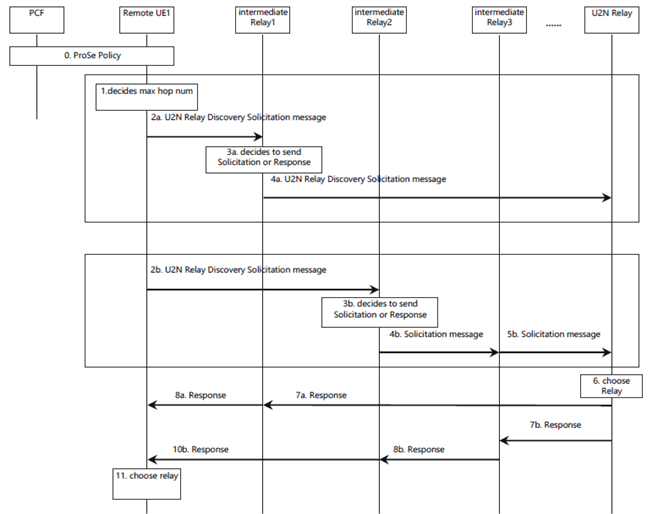
Figure 6.3.2.5.3-1: General Procedures for 5G ProSe Multi-hop UE-to-Network Relay Discovery with Model B
(⇒ copy of original 3GPP image)
(⇒ copy of original 3GPP image)
Step 1.
The 5G ProSe Remote UE determines the Hop-Limit for discovery based on policy configuration (i.e. a mapping between maximum number of hops and RSC) or QoS requirements.
If the Hop-Limit is determined based on configuration associated with the RSC, the 5G ProSe Remote UE does not include the Hop-Limit in the Solicitation message. Otherwise, the 5G ProSe Remote UE includes the Hop-Limit in the Solicitation message.
Step 2a.
The 5G ProSe Remote UE sends a 5G ProSe UE-to-Network Relay Discovery Solicitation message. The 5G ProSe UE-to-Network Relay Discovery Solicitation message additionally contains following IEs compared with that in clause 6.3.2.3.3: an indication that multi-hop relay is supported, hop count and Hop-Limit.
The Target Info may contain the User Info ID of the UE-to-Network Relay and Intermediate Relay(s).
Step 3a.
If an indication that multi-hop relay is supported is contained in the received Solicitation message, the RSC contained in the Solicitation message matches any of the (pre)configured RSC(s), as specified in clause 5.1.4.1a, of a 5G ProSe Intermediate Relay, and the Target Info matches the User Info ID of the 5G ProSe Intermediate Relay (if any), the 5G ProSe Intermediate Relay may decide to send a 5G ProSe UE-to-Network Relay Discovery Solicitation message.
The 5G ProSe Intermediate Relay shall drop the received Solicitation message if the hop count (corresponding to the number of Relays included in the message) has reached the Hop-Limit of the received Solicitation message or the (pre)configured maximum number of hops associated with the RSC.
The 5G ProSe Intermediate Relay may send a Response message when it has already found or established PC5 link with 5G ProSe UE-to-Network Relay(s), without sending Solicitation message. i.e., steps 4a-8a are skipped and step 9a is performed directly. The response message additionally contains the User Info ID of UE-to-Network Relay, path information to the UE-to-Network Relay which is an (ordered) list of User Info ID of intermediate Relay(s).
If the same information on User Info IDs of Remote UE and UE-to-Network Relay is received from different ProSe UEs, the 5G ProSe Intermediate UE-to- Network Relay may select a Solicitation message to be sent to the next hop based on various criteria (e.g., hop count, delay, channel quality of received messages, etc.).
Step 4a.
A 5G ProSe Intermediate Relay sends a Solicitation message, it additionally includes its own User Info ID in the message. i.e., the message contains the path information which is an (ordered) list of User Info ID of Relays in the path that has relayed the Solicitation message. The hop count is increased by 1.
Step 2b.-5b.
The Solicitation message from the same Remote UE goes through a different ordered list of 5G ProSe Intermediate Relays.
Step 6-7.
If the RSC contained in the solicitation message matches any of the (pre)configured RSC(s), as specified in clause 5.1.4.1, of the 5G ProSe UE-to-Network Relay, and the Target Info matches the User Info ID of the 5G ProSe UE-to-Network Relay (if any), then the 5G ProSe UE-to-Network Relay responds to the 5G ProSe Intermediate Relay with a 5G ProSe UE-to-Network Relay Discovery Response message. The 5G ProSe UE-to- Network Relay Discovery Response message additionally contains the path information compared with that in clause 6.3.2.3.3.
The 5G ProSe UE-to-Network Relay may choose the path based on e.g., the PC5 signal strength of each message received, hops to the Remote UE, the path information, etc.
Step 8-10.
A 5G ProSe Intermediate Relay forwards the a 5G ProSe UE-to-Network Relay Discovery Response message. The Response message additionally contains the path information.
Step 11.
The Remote UE may perform relay path selection based on e.g., the PC5 signal strength and the number of hops to the 5G ProSe UE-to-Network Relay.
6.3.2.5.4 Additional parameters announcement procedure over 5G ProSe multi-hop UE-to-Network Relay p. 109
Additional parameters announcement procedure outlined in Figure 6.3.2.5.4-1 is used by a 5G ProSe Remote UE to request a 5G ProSe UE-to-Network Relay to announce additional parameters (using Model A). The Additional parameters announcement procedure specified in clause 6.5.1.3 is used with the following differences described in the procedure below.
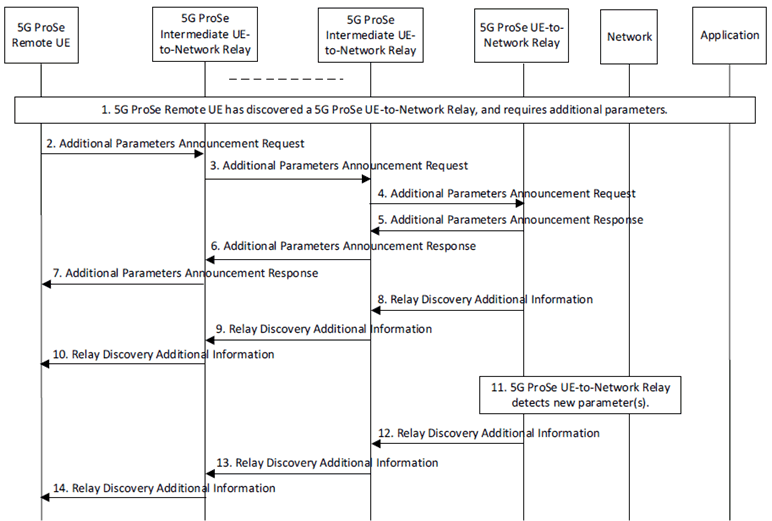
Figure 6.3.2.5.4-1: Procedure for additional parameters announcement for multi-hop UE-to-Network relaying
(⇒ copy of original 3GPP image)
(⇒ copy of original 3GPP image)
Step 1.
If the 5G ProSe Intermediate UE-to-Network Relay connected to 5G ProSe UE-to-Network Relay detects new or updated additional parameters (e.g. due to change of its serving cell, moving into network coverage), it may send a Relay Discovery Additional Information message including the new or updated additional parameters. In this case, the 5G ProSe Intermediate UE-to-Network Relay acts as the 5G ProSe UE-to-Network Relay in Figure 6.3.2.5.4-1, i.e. to send Relay Discovery Additional Information message. The 5G ProSe Intermediate UE-to-Network Relay also keeps a record of the additional parameters from the 5G ProSe UE-to-Network Relay.
5G ProSe Remote UE has discovered a 5G ProSe UE-to-Network Relay for connectivity to the network as described in clause 6.3.2.5.2, and requires additional parameters.
Step 2.
The 5G ProSe Remote UE sends to the 5G ProSe Intermediate UE-to-Network Relay an Additional Parameters Announcement Request including the following additional information to obtain additional parameters.
Step 3-4.
- Relay Service Code: information about the connectivity service provided by the 5G ProSe UE-to-Network Relay.
- Root Relay Info: identify information (i.e. User Info ID) of the 5G ProSe UE-to-Network Relay.
The Additional Parameters Announcement Request is sent up to the 5G ProSe UE-to-Network Relay.
Step 5.
The 5G ProSe UE-to-Network Relay acknowledges receipt of the request in step 4 with an Additional Parameters Announcement Response (Additional_Parameters_Announcement_Request_Refresh Timer).
Step 6-7.
The Additional Parameters Announcement Response is sent to the 5G ProSe Remote UE, relayed via the 5G ProSe Intermediate UE-to-Network Relay.
Step 8.
The 5G ProSe UE-to-Network Relay reuses the Relay Discovery Additional Information message as defined in clause 5.8.3 with the following additional information:
Step 9.
- Hop-Count: the value is set to 1.
The 5G ProSe Intermediate UE-to-Network Relay forwards the Relay Discovery Additional Information message. The 5G ProSe Intermediate UE-to-Network Relay updates the Hop-Count as below and may include additional information, Announcer Info and NCGI of 5G ProSe Intermediate UE-to-Network Relay if its NCGI is available:
Step 10.
- Hop-Count: the value of the received Relay Discovery Additonal Information message is incremented by 1.
- Announcer Info of 5G ProSe Intermediate UE-to-Network Relay: identity information (i.e. User Info ID) of the 5G ProSe Intermediate UE-to-Network Relay transmitting this message.
- NCGI of 5G ProSe Intermediate UE-to-Network Relay: indicates the NCGI of the serving cell of the 5G ProSe Intermediate UE-to-Network Relay.
The 5G ProSe Intermediate UE-to-Network Relay forwards the Relay Discovery Additional Information message, with the Hop-Count incremented. The 5G ProSe Intermediate UE-to-Network Relay shall not forward the Relay Discovery Additional Information message if the Hop-Count is bigger than the configured maximum number of hops.
Step 11.
The 5G ProSe UE-to-Network Relay detects new or updated additional parameters.
Step 12-14.
Same as steps 8-10.
6.3.2.6 5G ProSe Mulit-hop UE-to-UE Relay Discovery |R19| p. 111
6.3.2.6.1 General p. 111
The 5G ProSe Multi-hop UE-to-UE Relay discovery may use one of the two different types of discovery operations, i.e. discovery for IP PDU type, and discovery for non-IP PDU type, depends on the RSC for the discovery.
5G ProSe Multi-hop UE-to-UE Relay discovery of IP PDU type only needs to discover the presence of the 5G ProSe Multi-hop UE-to-UE Relay. The discovery of the target 5G ProSe End UEs are performed via DNS queries after establsihing a link with the 5G ProSe Multi-hop UE-to-UE Relay(s). The details of the procedure are defined in clause 6.3.2.6.2.
5G ProSe Multi-hop UE-to-UE Relay discovery of non-IP (Ethernet or Unstructured) PDU type is for the discovery of a target 5G ProSe End UE and the corresponding routes. The procedures for 5G ProSe Multi-hop UE-to-UE Relay discovery Model A/B for non-IP PDUs (e.g. Ethernet or Unstructured) are defined in clause 6.3.2.6.3.
6.3.2.6.2 Procedure for 5G ProSe Multi-hop UE-to-UE Relay discovery of IP PDU type p. 111
Depicted in Figure 6.3.2.6.2-1 is the procedure for 5G ProSe Multi-hop UE-to-UE Relay discovery of IP PDU type, with Model A.
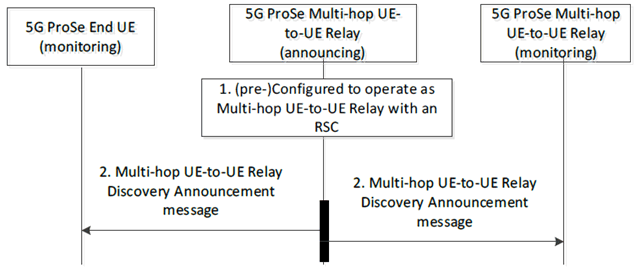
Figure 6.3.2.6.2-1: 5G ProSe Multi-hop UE-to-UE Relay Discovery of IP PDU type with Model A
(⇒ copy of original 3GPP image)
(⇒ copy of original 3GPP image)
Step 1.
Depicted in Figure 6.3.2.6.2-2 is the procedure for 5G ProSe Multi-hop UE-to-UE Relay discovery of IP PDU type, with Model B. A 5G ProSe Multi-hop UE-to-UE Relay may also use the procedure, i.e. send the Multi-hop UE-to-UE Relay Discovery Solicitation (taking the role of the 5G ProSe End UE (Discover)), if it needs to discovery other 5G ProSe Multi-hop UE-to-UE Relays.
The 5G ProSe Multi-hop UE-to-UE Relay is configured to operate IP PDU type of discovery based on the indication associated with the RSC, as defined in defined in clause 5.1.5.1.
Step 2.
The 5G ProSe Multi-hop UE-to-UE Relay sends a Multi-hp UE-to-UE Relay Discovery Announcement message. This message contains the Type of Discovery Message, User Info ID of the 5G ProSe Multi-hop UE-to-UE Relay, and the RSC, as defined in clause 5.8.6.2.
The 5G ProSe Multi-hop UE-to-UE Relay self generates a Source Layer-2 ID, and decides a Destiantion Layer-2 ID as defined in clause 5.8.6.2.
The 5G ProSe End UE(s) or other 5G ProSe Multi-hop UE-to-UE Relay(s) in proximity monitoring the same RSC may receive the announcement message and process it accordingly, e.g. initiates a Layer-2 Link establishment with the announcing 5G ProSe Multi-hop UE-to-UE Relay.
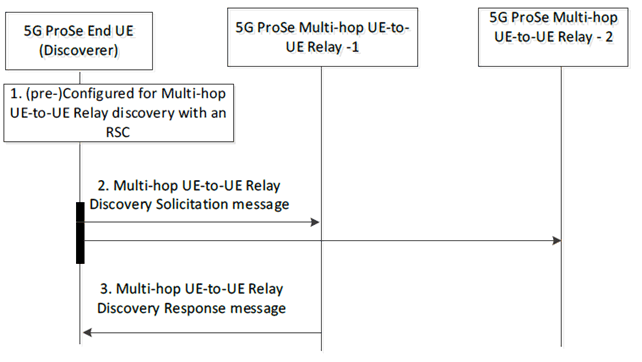
Figure 6.3.2.6.2-2: 5G ProSe Multi-hop UE-to-UE Relay Discovery of IP PDU type with Model B
(⇒ copy of original 3GPP image)
(⇒ copy of original 3GPP image)
Step 1.
The 5G ProSe End UE is configured to operate IP PDU type of discovery based on the indication associated with the RSC, as defined in defined in clause 5.1.5.1.
Step 2.
The 5G ProSe End UE sends a Multi-hop UE-to-UE Relay Discovery Solicitation message. This message contains the Type of Discovery Message, RSC, and (optional) User Info ID of the 5G ProSe Multi-hop UE-to-UE Relay, as defined in clause 5.8.6.2.
The User Info ID of the 5G ProSe Multi-hop UE-to-UE Relay is only included if the 5G ProSe End UE wants to find a specific target relay.
The 5G ProSe End UE self generates a Source Layer-2 ID, and decides a Destiantion Layer-2 ID as defined in clause 5.8.6.2.
Step 3.
The 5G ProSe Multi-hop UE-to-UE Relay-1 may send a Multi-hop UE-to-UE Relay Discovery Response message, if the RSC contained in the solicitation message matches any of the (pre)configured RSC(s), as specified in clause 5.1.5.1. If User Info ID is included in the solicitation message, 5G ProSe Multi-hop UE-to-UE Relay-1 only sends the response message when it matches its own User Info ID.
The 5G ProSe Multi-hop UE-to-UE Relay-1 may in proximity may decide not to respond if the criteria are not met, or due to UE local configuraitons.
6.3.2.6.3 Procedure for 5G ProSe Multi-hop UE-to-UE Relay discovery of non-IP PDU type p. 113
6.3.2.6.3.1 Procedure for Multi-hop 5G ProSe UE-to-UE Relay Discovery of non-IP PDU type with Model A p. 113
Depicted in Figure 6.3.2.6.3.1-1 is the procedure for Multi-hop 5G ProSe UE-to-UE Relay Discovery of non-IP PDU type with Model A.
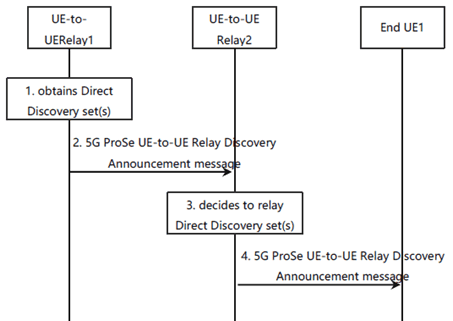
Figure 6.3.2.6.3.1-1: 5G ProSe multi-hop UE-to-UE Relay Discovery of non-IP PDU type with Model A
(⇒ copy of original 3GPP image)
(⇒ copy of original 3GPP image)
Step 1.
The 5G ProSe UE-to-UE Relay has discovered End UEs in proximity and obtains the Direct discovery set from End UEs in proximity per RSC. (e.g. via a previous 5G ProSe UE-to-UE Relay Discovery or via secure PC5 connection between 5G ProSe U2U Relay and 5G ProSe End UE (refer to TS 33.503)). 5G ProSe UE-to-UE Relay may also get the maximum number of hops from End UEs.
Step 2.
The 5G ProSe UE-to-UE Relay sends a UE-to-UE Relay Discovery Announcement message. The UE-to-UE Relay Discovery Announcement message contains the User Info ID of itself, Direct Discovery set including list of protected user info of End UEs, a list of paths indicated by an (ordered) list of User Info ID of Relays (initially it only contains the User Info ID of UE-to-UE Relay1 in the Figure), hop count (which is set to 1 initially) corresponding to each user info in the Direct Discovery set and optionally maximum number of hops corresponding to each user info in the Direct Discovery set. Each path corresponds to a user info in the Direct Discovery set.
The UE-to-UE Relay Discovery Announcement message is sent using the Source Layer-2 ID and Destination Layer-2 ID as described in clause 5.8.4.
Step 3.
After receiving UE-to-UE Relay Discovery Announcement message(s) from another 5G ProSe UE-to-UE relay, a 5G ProSe UE-to-UE Relay checks the received Direct Discovery set. For each protected user info in the received Direct Discovery set, if the path does not include the User Info ID of the 5G ProSe UE-to-UE Relay and the hop count is less than the corresponding maximum number of hops, the relay will add the protected user info into its own Direct Discovery set (if it is not added before) and add its own User Info ID into the path of the corresponding protected user info and increase the hop count by 1. If the relay already has the protected user info in its own Direct Discovery set with the hop count less than or equal to the received one, then it is up to relay's implementation to determine if add the protected user info again.
Step 4.
A 5G ProSe End UE or a 5G ProSe UE-to-UE Relay monitors Announcement message from a 5G ProSe UE-to-UE Relay. The 5G ProSe End UEs and 5G ProSe UE-to-UE Relays determine the Destination Layer-2 ID for signalling reception as specified in clause 5.1.
6.3.2.6.3.2 Procedure for Multi-hop 5G ProSe UE-to-UE Relay Discovery of non-IP PDU type with Model B p. 114
Depicted in Figure 6.3.2.6.3.2-1 is the procedure for Multi-hop 5G ProSe UE-to-UE Relay Discovery of non-IP PDU type with Model B.
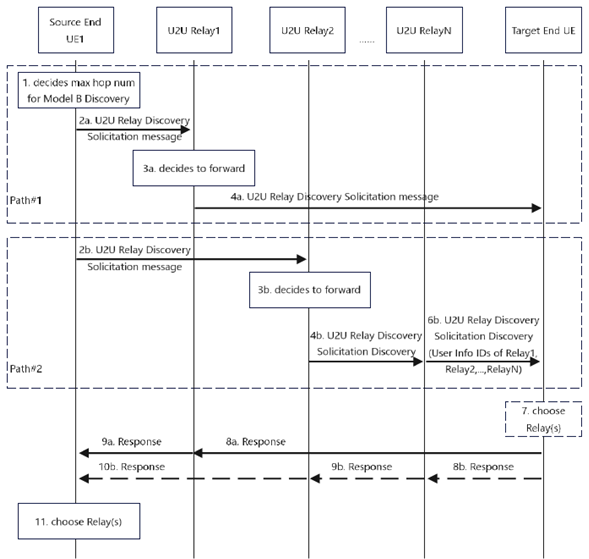
Figure 6.3.2.6.3.2-1: Multi-hop 5G ProSe UE-to-UE Relay Discovery of non-IP PDU type with Model B
(⇒ copy of original 3GPP image)
(⇒ copy of original 3GPP image)
Step 1.
The Source End UE determines the maximum number of hops for discovery based on policy configuration (i.e. a mapping between maximum number of hops and RSC) or QoS parameters.
If the maximum number of hops is determined based on RSC, the Source End UE may not include the maximum number of hops in the Solicitation message. Otherwise, the Source End UE includes the maximum number of hops in the Solicitation message.
Step 2a.
The Source End UE sends a 5G ProSe UE-to-UE Relay Discovery Solicitation message. The 5G ProSe UE-to-UE Relay Discovery Solicitation message additionally contains following information compared with that defined in clause 6.3.2.4.3: hop count which will be increased by 1 per hop, a const value of maximum number of hops.
Step 3a.
If the RSC contained in the solicitation message matches any of the (pre)configured RSC(s) of a 5G ProSe UE-to-UE Relay, the 5G ProSe UE-to-UE Relay may decide to send a 5G ProSe UE-to-UE Relay Discovery Solicitation message.
The 5G ProSe UE-to-UE Relay should drop the received Solicitation message when its own User Info ID is contained in the received Solicitation message, or if the hop count (i.e., the number of Relays included in the message) has reached the maximum number of hops of the received Solicitation message. The maximum number of hops may be obtained from the Solicitation message or may be decided based on RSC if it is not obtained from the message.
If the same Direct Discovery Set is received from different 5G ProSe-enabled UEs, the 5G ProSe UE-to-UE Relay may select a Solicitation message to be sent to the next hop based on various criteria (e.g., hop count, delay, channel quality of received messages, etc.).
Step 4a.
A 5G ProSe UE-to-UE Relay sends a Solicitation message, it additionally includes its own User Info ID in the message. i.e. the message contains the path information which is an (ordered) list of User Info ID of Relays in the path that has sent the Solicitation message. The hop count is increased by 1.
The 5G ProSe UE-to-UE Relay may assign unique Layer-2 ID for sending Solicitation message as described in clause 6.3.2.4.3.
Step 2b.-6b.
Another transmission path of the Solicitation message.
Step 7-8.
If the RSC contained in the solicitation message matches any of the (pre)configured RSC(s) of the Target 5G ProSe End UE, and the Target 5G ProSe End UE matches the user info (i.e. Application Layer ID) of the discoveree 5G ProSe End UE contained in the solicitation message, then the Target 5G ProSe End UE responds to the 5G ProSe UE-to-UE Relay with a 5G ProSe UE-to-UE Relay Discovery Response message. The 5G ProSe UE-to-UE Relay Discovery Response message additionally contains the path information compared with that defined in clause 6.3.2.4.3.
The Target 5G ProSe End UE may choose a path and sends Response message to 5G ProSe UE-to-UE Relay(s) based on e.g. the PC5 signal strength of each message received, hops to the Source End UE, the path information, etc.
Step 9-10.
A 5G ProSe UE-to-UE Relay sends a 5G ProSe UE-to-UE Relay Discovery Response message. A 5G ProSe UE-to-UE Relay may associate the User Info ID and Layer-2 ID of neighbour UE-to-UE Relays according to the Response message. The association can be used in the subsequent Link Management procedures.
Step 11.
The Source End UE may perform the UE-to-UE Relay(s)/path selection for subsequent Link Management procedures based on e.g. the PC5 signal strength of the received Response messages, the number of hops to Target 5G ProSe End UE.